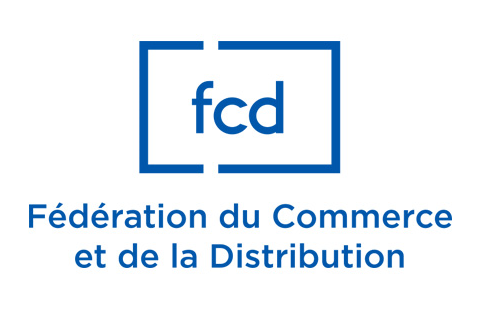News
GMOs : the Commission ignores its experts to reassure industry

Has the European Commission based its proposal to deregulate GMOs/NTGs on « sound science » or on the demands of seed companies ? Documents obtained by Corporate Europe Observatory (CEO) show that the Commission chose to listen to the companies rather than its own experts at the European Food Safety Authority (EFSA). The EFSA had indeed asked for an assessment – albeit a relatively light one – of the risks of « new GMOs ». However, the European Commission has proposed to abolish this requirement, as requested by certain companies.
On July 5, 2023, the European Commission published its plan to deregulate GMOs obtained using « new genomic techniques » (GMOs/NGTs). Contrary to its usual practice, the Commission made very little reference to the notion of « sound science ». It makes no mention of it either in the press release accompanying its proposal, or in the contribution on the « Green Pact » policy which serves as the political justification for the same proposal [1]. Only the FAQ details that the Commission has relied « on EU-level scientific advisory bodies », including the EFSA [2]. An Authority which recommended, in October 2022, that plants genetically modified by new techniques be evaluated [3].
Commission reassures companies
Between 2012 and 2020, EFSA published several opinions on the risks associated with GMO/NGT plants. These concluded that a risk assessment, albeit a simplified one, is necessary. In October 2022, this body completed its work by publishing a document listing the « six main criteria to assist the risk assessment » of these GMO/NGT plants [4].
This latest opinion has caused concern among companies, who want no risk assessment to be required. In fact, this opinion, like its predecessors, acknowledges the need for a risk assessment. Correspondence between the Commission and certain companies or company representatives shows that the latter mobilized against this opinion at the end of 2022 / beginning of 2023.
In December 2022, Croplife explained to the European Commission that it was concerned that the EFSA opinion « might give the impression that a mandatory risk assessment strep is necessary for all plants obtained by targeted mutagenesis, cisgenesis and intragenesis ». For, Croplife argues, current GMO legislation is simply « not an appropriate basis to regulate these plants [unlike] the existing framework available for conventional breeding has shown to provide a high level of protection. ».
In January 2023, Limagrain expressed the same concern to the Commission, albeit in more restrained terms. It regretted that the Commission had restricted EFSA’s mandate to the legislative framework for GMOs, whereas it should have asked EFSA « considerations of whether a risk assessment would be needed for conventional-like NGT plants ».
Finally, in the same month, the French Plant Biotechnology Association (AFBV) also took up the cause. In February 2023, the European Commission replied that it had received the document in which the AFBV wrote that it does « not share EFSA’s apparent recommendation that a mandatory risk assessment step is necessary for plants obtained by directed mutagenesis, cisgenesis and intragenesis ».
In its responses, the European Commission is willing to reassure. In January 2023, it replied to CropLife that EFSA’s work « on possible criteria for risk assessment also feeds into this policy work as scientific advice to the Commission for consideration. This in no way prejudges what regulatory framework could eventually be proposed for NGT plants. The framing of the Terms of Reference of the Commission’s mandate to EFSA was indeed focused on the development of criteria for risk assessment, in case such an approach were to be proposed. A decision on whether risk assessment should be performed on NGT plants or not is outside EFSA’s remit, as you correctly noted ». Of course, the Commission is right to point out that politicians are the decision-makers, not scientific experts. But in the present case, it is going against their advice by proposing, on July 5 2023, that no risk assessment be carried out for a majority of GMO/NGT plants.
No risk assessment for a large number of GMOs
Indeed, in its text presented to the Council of the European Union and the European Parliament, the Commission proposes that GMOs obtained by new techniques of genetic modification (GMOs/NGTs) be divided into two categories. The first would be the NTG class 1, which could eventually concern the majority of GMOs obtained by these techniques [5] [6]. For them, the Commission proposes that no health and environmental risk assessment be carried out. Because, it claims, « risk assessment requirements for GMOs under the Union GMO legislation are not adapted to the variety of potential organisms and products that can be obtained with some NGTs […] and these requirements can be disproportionate or inadequate » [7]. It adds that these NTG1 plants « should be treated as plants that have occurred naturally or have been produced by conventional breeding techniques », in particular because « they are equivalent and that their risks are comparable » [8].
In the « whereas », which refer to the legislator’s intentions, the European Commission does not mention the EFSA’s opinion on Category 1 GMO/NTG plants. However, this opinion concerns all plants obtained by « targeted mutagenesis, cisgenesis and intragenesis », including these category 1 GMO/NTG plants. But the Commission refers to this opinion only for category 2 GMO/NTG plants, defined by the European Commission as those not belonging to category 1. The Commission thus suggests that, on the basis of the EFSA opinion, « considerations on the history of safe use, familiarity for the environment and the function and structure of the modified/inserted sequence(s) should assist in determining the type and amount of data required to perform the risk assessment of those NGT plants » [9]. These NTG2 plants would therefore be subject to a variable risk assessment.
A proposal that ignores the opinion of European experts
Surprisingly, the European Commission’s reference to EFSA’s opinion in this proposal is partial and biased as it has taken the liberty of rewriting EFSA’s opinions.
On the one hand, it considers that the risk assessment requirements of current GMO legislation « can be disproportionate and inadequate ». In its October 2022 opinion, however, EFSA reminded the European Commission that it had already issued opinions on the subject [10]. It was on the basis of these opinions that the Commission concluded, in 2021, that it was only « in some cases [that the requirements] can be disproportionate or inadequate ».
On the other hand, the European Commission claims that NTG1 plants « are equivalent and that their risks comparable » to conventionally obtained or naturally occurring plants. However, in 2022, the EFSA recalled that it had considered, in 2012 and 2020, « that plants produced by targeted mutagenesis, cisgenesis and intragenesis, in some cases, do not pose new hazards compared to plants produced with classical mutagenesis or conventional breeding techniques » [11]. Only in some cases, not in all cases ! To overlook these restrictions is misleading, to say the least.
If followed, the EFSA criteria would have resulted in a much lighter risk assessment for these GMOs than what is legally required today. But they were clearly already too much for the European Commission, which ultimately chose to ignore the EFSA’s opinion. It therefore proposes that only « a description of the trait(s) and characteristics which have been introduced or modified » be provided for GMOs/NTG1 and that no risk assessment be conducted [12]. In this, it responds favourably to the concerns expressed by several representatives of pro-GMO companies and lobbying associations…
[1] European Commission, « New techniques in biotechnology ».
[2] FAQ, Question 7 : https://ec.europa.eu/commission/presscorner/detail/en/qanda_23_3568
[3] , « For EFSA, risk analysis of GMOs must become the exception », Inf’OGM, 9 janvier 2023.
[4] EFSA, « Criteria for risk assessment of plants produced by targeted mutagenesis, cisgenesis and intragenesis », EFSA Journal, Volume20, Issue10, October 2022.
[5] , « The European Commission wants to put an end to GMOs », Inf’OGM, 24 juillet 2023
[6] , « OGM – La Commission veut achever de restreindre la liberté des États », Inf’OGM, 23 août 2023
[7] European Commission, Recital 7 of the « Proposal for a Regulation of the European Parliament and of the Council on plants obtained by certain new genomic techniques and their food and feed, and amending Regulation (EU) 2017/625 », p.22, July 5, 2023
[8] Ibid., Recital 14.
[9] Ibid., Recital 26.
[10] See paragraph « Background », page 4 of EFSA opinion : EFSA, « Criteria for risk assessment of plants produced by targeted mutagenesis, cisgenesis and intragenesis », October 2022
[11] Ibid.
[12] European Commission, Articles 6 and 7 of the « Proposal for a Regulation of the European Parliament and of the Council on plants obtained by certain new genomic techniques and their food and feed, and amending Regulation (EU) 2017/625 », 5 July 2023















